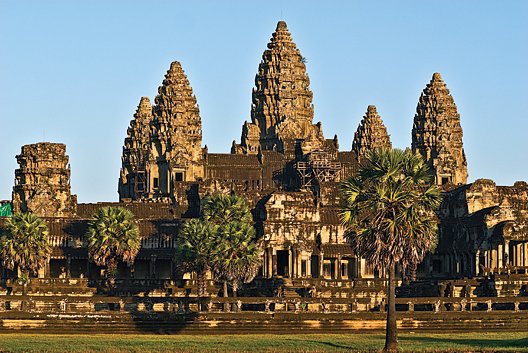111. Angkor Wat temple complex,
Angkor, c. 1120 and later (Cambodia)
One of the largest religious monuments in existence, the temple at Angkor Wat is a source of great national pride—it has appeared on the Cambodian flag since 1863. A great mountain-like assemblage of stone originally dedicated to the Hindu god Vishnu, its order and layout are comparable to the earlier Great Stupa at Borobodur. Angkor Wat was begun by King Suryavarman II, who was later buried there. When completed, it became the royal shrine of the Khmer dynasty, though it was eventually converted to Buddhist uses. Like Borobodur, the temple is largely sculptural rather than spatial in conception. On their quest to reach the top, dedicated visitors would cover many kilometres in circumambulating the multiple terraces. After being attacked in 1431, the complex was largely abandoned except by a colony of monks. Few Western visitors made their way to Angkor Wat before its existence was advertised by the French naturalist Henri Mouhot, who came across it in 1860. Astonished by its size and grandeur, Mouhot wrote that Angkor Wat rivalled the Temple of Solomon and was greater than any ruin left by the Greek and Roman civilisations. The complex was cleared and partly reconstructed in the 20th century.
